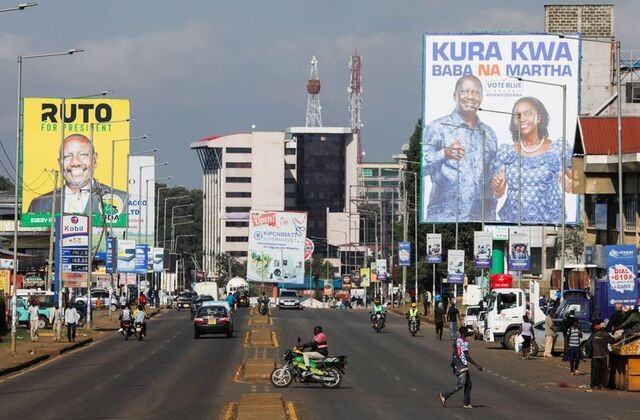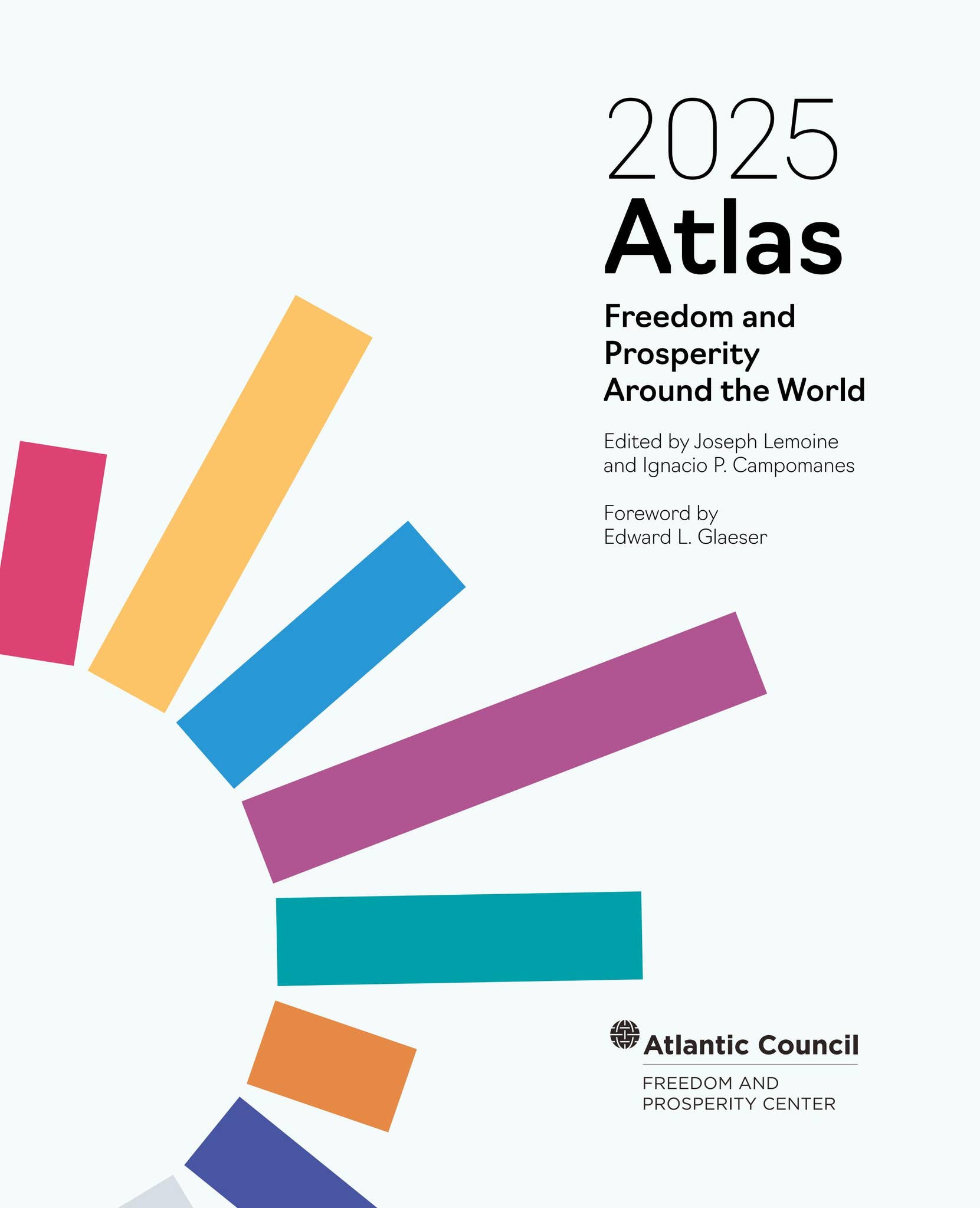What Is Truly at Stake for Kenyans in the 2022 Elections?
What Is Truly at Stake for Kenyans in the 2022 Elections?
On August 9, 2022, Kenya marked one of the most pivotal moments in its modern history. What began as a contest between two high-profile leaders — Deputy President William Ruto and veteran opposition icon Raila Odinga — evolved into a national referendum on democracy, economics, ethnic harmony, and peaceful governance.
🔹 1. A Historic Class-Based Political Narrative
For the first time in Kenya’s multiparty era, the political debate transcended ethnic divisions. Deputy President Ruto campaigned under the clarion call of the “hustler nation” — positioning himself as the champion of street vendors, smallholder farmers, and informal workers. He presented a populist “bottom-up economic model” and proposed a ‘hustler fund’ aimed at empowering low‑income Kenyans :contentReference[oaicite:1]{index=1}.
Meanwhile, Odinga, leader of the Azimio la Umoja coalition, leaned on his experience, alignment with outgoing President Uhuru Kenyatta, and a platform of welfare, manufacturing growth, and national reconciliation :contentReference[oaicite:2]{index=2}.
🔹 2. Economic Stakes: Inflation, Debt, and Investor Confidence
Entering the 2022 elections, Kenya faced elevated public debt, double-digit inflation, and an unstable currency :contentReference[oaicite:3]{index=3}. The cost-of-living crisis weighed heavily on urban and rural households alike.
Ruto’s economic plan targeted informal workers, aiming to decentralize wealth creation. Conversely, Odinga emphasized state-driven job creation and manufacturing-led growth. The implications for foreign investors and Kenya’s financial markets were significant: a disputed election risked triggering capital flight, shilling depreciation, and credit downgrades :contentReference[oaicite:4]{index=4}.
🔹 3. Impartial Institutions & The Threat of Violence
Kenya’s Independent Electoral and Boundaries Commission (IEBC) faced intense scrutiny. Improvements like publicly accessible polling forms and parallel vote tabulation (PVT) marked progress from the controversial 2007 and 2017 elections :contentReference[oaicite:5]{index=5}.
However, allegations of misconduct emerged. In August 2022, Odinga filed a Supreme Court petition, challenging executive interference in the IEBC and questioning the integrity of the result announcements :contentReference[oaicite:6]{index=6}. His approach marked a shift: instead of street protests, legal remedies took center stage — an indication of growing trust in judicial recourse.
🔹 4. Supreme Court & Legal Processes: Peace through Law
The Supreme Court’s role has evolved dramatically. In 2017, it annulled results for the first time, prompting a rerun. In 2022, both leading candidates vowed to respect judicial outcomes over violence :contentReference[oaicite:7]{index=7}. This time, Odinga accepted judicial oversight, reinforcing the court’s position as a peacekeeper.
On September 5, 2022, the Supreme Court upheld Ruto’s victory: 50.49% to 48.79%, marking a rare judiciary‑sanctioned power transition :contentReference[oaicite:8]{index=8}.
🔹 5. Ethnic Realignment: Beyond Kikuyu vs. Kikuyu
The 2022 elections broke longstanding ethnic power norms. Ruto (Kalenjin) and Odinga (Luo) stood atop the ticket while the Kikuyu-dominated dynasties were notably absent, signaling a move away from Kikuyu political dominance :contentReference[oaicite:9]{index=9}.
Still, ethnic identity remained powerful. Each candidate chose a Kikuyu running mate — a strategic nod to balance regional votes :contentReference[oaicite:10]{index=10}. The election thus served as a testing ground for ethnic inclusion and national unity.
🔹 6. Regional Leadership & Global Outlook
Kenya’s geopolitical role—between China, the U.S., the IMF, and regional blocs—hinged on election outcomes. Its pivotal position in East Africa and ongoing Vision 2030 initiatives meant that global investors watched closely :contentReference[oaicite:11]{index=11}.
🔹 7. Coalition Politics & Governance Balance
The elections extended beyond the presidency: simultaneous contests were held for governors, MPs, and county assemblies. Power-sharing between Kenya Kwanza (Ruto) and Azimio was critical for legislative efficiency and executive success :contentReference[oaicite:12]{index=12}.
Ruto’s coalition held dominance after the Supreme Court verdict, enabling initial cabinet appointments and legislative reforms — though cracks started emerging as early as mid‑2024 :contentReference[oaicite:13]{index=13}.
🔹 8. Early Governance: Promises vs. Realities
Ruto’s first months in office delivered on some fronts: judicial reforms, disbanding of controversial police units, and a reconfigured cabinet. However, rising inflation, tax hikes, and the dismantling of fuel subsidies triggered widespread protests in 2024, culminating in cabinet dissolution and a promise of national dialogue :contentReference[oaicite:14]{index=14}.
Notably, in July 2024, Ruto dismissed nearly the entire cabinet after protests claimed 41 lives, pledging a government of national unity — though many analysts remain cautiously skeptical :contentReference[oaicite:15]{index=15}.
🔹 9. Civil Society & Media: Gatekeepers of Democracy
Kenya’s free press and vibrant civil society acted as watchdogs. Election observation groups documented proceedings transparently. Media outlets leveraged PVT and public polling data to enhance accountability :contentReference[oaicite:16]{index=16}.
This oversight helped reduce immediate violence post‑election. Parliamentary watchdogs like Mzalendo echoed calls for legal safety nets over street conflict :contentReference[oaicite:17]{index=17}.
🔹 10. Lessons from the Past: Avoiding 2007/2017 Failures
The shadow of post‑election violence in 2007‑08 and 2017 loomed large. This time, the quest for constitutional transparency, judicial trust, and political consensus prevented a relapse into chaos :contentReference[oaicite:18]{index=18}.
At stake: the redefinition of democracy in East Africa. A peaceful transition would signal progress to the continent and the global community.
🔹 What’s Next for Kenya — Beyond the Ballot
- Economic reform: Delivering on cost-of‑living relief, small business finance, and debt sustainability.
- Institutional reforms: Reinforcing IEBC independence, prompt judiciary decisions, and transparent governance.
- National cohesion: Healing ethnic divisions through inclusive cabinet appointments and equitable resource distribution.
- Global positioning: Balancing investments from global partners and avoiding over-dependency on one source.
- Civil rights and security: Aligning policing with constitutional freedoms and responding humanely to dissent.
Conclusion
The 2022 Kenyan election was a watershed moment symbolizing a mature democracy in action. The pairing of Ruto’s economic populism with Odinga’s institutional legacy framed a critical choice for voters: disrupt or stabilize, overhaul or preserve.
The peaceful judicial resolution, though contested, marked a dramatic departure from past cycles of violence — showcasing an electorate and leadership opting for constitutionalism over conflict. Yet governance challenges persist: inflation, public debt, and protest culture demand accountability in the years ahead.
Ultimately, what was at stake wasn’t just a leader, but the integrity of Kenya’s democratic experiment — a test it passed, though its next chapter depends on healing, delivery, and unity.
For deeper insights:
- The hustle vs dynasty narrative explained
- Kenya’s judiciary under pressure: reform and resilience
- Kenya’s economic dashboard post‑2022 election
External references:
- International Crisis Group: Kenya’s 2022 election stakes :contentReference[oaicite:19]{index=19}
- IFRI: Ruto’s “hustler narrative” and intra‑elite dynamics :contentReference[oaicite:20]{index=20}
- Associated Press: Post‑2025 protests and governance concerns :contentReference[oaicite:21]{index=21}
- TIME: Why the 2022 vote mattered for Kenya’s democracy :contentReference[oaicite:22]{index=22}
Feature image: Ruto and Odinga during the tense but peaceful vote-counting period in August 2022.
What Is Truly at Stake for Kenyans in the 2022 Elections?
What Is Truly at Stake for Kenyans in the 2022 Elections?
On August 9, 2022, Kenya held its most critical ballot in decades. With the presidency on the line, the stakes extended far beyond the top office—touching the economy, democratic institutions, ethnic cohesion, and the future of peaceful power transfers.
1. Tight Presidential Showdown & Promises of Peace
The two front‑runners, Deputy President William Ruto and veteran opposition leader Raila Odinga, locked horns in a razor‑tight race. Ruto eventually secured 50.49% against Odinga’s 48.85% :contentReference[oaicite:2]{index=2}.
Both pledged to respect the election outcome — a notable shift toward prioritizing national stability over political rivalry :contentReference[oaicite:3]{index=3}.
2. Economic Stakes: Inflation, Debt, and Investor Confidence
At election time, Kenya grappled with inflation, a struggling shilling, and rising public debt — creating a volatile environment for both citizens and investors :contentReference[oaicite:4]{index=4}.
Ruto pushed a “bottom‑up” hustler‑nation narrative focused on small traders, while Odinga prioritized welfare, manufacturing, and food security :contentReference[oaicite:5]{index=5}.
3. Electoral Transparency & Institutional Credibility
The IEBC implemented reforms: public release of scanned polling results and a robust Parallel Vote Tabulation via ELOG — seen as increasing transparency :contentReference[oaicite:6]{index=6}.
Still, four commissioners distanced themselves from the results announcement, citing “opaque” dissemination :contentReference[oaicite:7]{index=7}. The split was tense but did not derail the process.
4. Role of the Supreme Court in Safeguarding Peace
Odinga challenged the results in the Supreme Court. On September 5, 2022, the court unanimously upheld Ruto’s win, dismissing fraud claims and reinforcing confidence in legal recourse :contentReference[oaicite:8]{index=8}.
Odinga accepted the verdict, stating he respected the constitution—a pivotal moment that steered Kenya away from violence :contentReference[oaicite:9]{index=9}.
5. Ethnic Realignment: Moving Beyond Kikuyu Dominance
For the first time, major contenders came from non‑Kikuyu communities: Ruto (Kalenjin) and Odinga (Luo). Each chose a Kikuyu running mate, signaling strategic ethnic inclusion :contentReference[oaicite:10]{index=10}.
This suggested a move toward national unity rather than traditional ethnic polarization.
6. Voter Turnout: Hustle vs Establishment
Opinion polls favored Odinga, but high turnout in Ruto strongholds tipped the balance :contentReference[oaicite:11]{index=11}.
The final turnout hovered around 64–65%, lower than 2017 but reflecting growing election fatigue :contentReference[oaicite:12]{index=12}.
7. Role of Civil Society & the Media
Media and civil society played a watchdog role—fact‑checking, broadcasting PVT results, and providing real‑time data to citizens :contentReference[oaicite:13]{index=13}.
The Kofi Annan Foundation and CMD‑Kenya later convened discussions on election lessons :contentReference[oaicite:14]{index=14}.
8. Avoiding Violent Precedents of 2007 & 2017
Peaceful conduct during campaigning and post‑election was a stark contrast to the violence that erupted in 2007 (1,200+ dead) and 2017 (100+ dead) :contentReference[oaicite:15]{index=15}.
Alternative legal mechanisms and media transparency helped defuse tensions.
9. Governance Transition & Future Reforms
Ruto took office in September 2022. Early actions included reforming the judiciary, restructuring the police, but tough economic policies triggered protests in 2024 — an entire cabinet was dissolved after unrest :contentReference[oaicite:16]{index=16}.
These events highlighted challenges in balancing reform with public backlash.
10. Regional & Global Impact
As a key regional player, Kenya influences East Africa’s security, trade, and development. The EU and US are closely monitoring its democratic trajectory :contentReference[oaicite:17]{index=17}.
Key Takeaways
- Economic stability: navigating inflation, debt, and investment confidence.
- Institutional trust: reinforcing IEBC and judiciary independence.
- Social unity: healing ethnic rifts via inclusive leadership.
- Peaceful democracy: affirming legal processes over unrest.
- Governance challenges: balancing reform and public tolerance.
Conclusion
The 2022 election represented a turning point in Kenya’s democratic consolidation. The commitment to peaceful results by both Ruto and Odinga helped prevent violence and signaled maturity. But economic and governance pressures remain intense as Kenya charts its path forward.
Explore more:
- The “Hustler vs Dynasty” narrative
- Electoral and judicial reforms in Kenya
- Kenya’s economic outlook post‑2022
External sources:
- Reuters: Supreme Court upholds Ruto’s win :contentReference[oaicite:18]{index=18}
- Africa Center: Seven takeaways :contentReference[oaicite:19]{index=19}
- TIME: High‑stakes democracy test :contentReference[oaicite:20]{index=20}
- The Guardian: Odinga rejects results :contentReference[oaicite:21]{index=21}
Featured image: A polling station queue during Kenya’s 2022 election — symbolizing what was truly at stake.
- The “Hustler vs Dynasty” narrative
- Electoral and judicial reforms in Kenya
- Kenya’s economic outlook post‑2022
- A history of Kenya’s political transitions
- The “Hustler vs Dynasty” narrative
- Electoral and judicial reforms in Kenya
- Kenya’s economic outlook post‑2022
- A history of Kenya’s political transitions
This suggested a move toward national unity. Read more in Kenya’s political history.
Odinga accepted the verdict, avoiding violence like in the 2007 elections.
Ruto’s “bottom-up” vision ties closely to points in our economy overview.
The Ultimate Stakes for Kenyans in the 2022 Elections
The Ultimate Stakes for Kenyans in the 2022 Elections
On August 9, 2022, Kenya held a pivotal presidential election that carried ultimate stakes—not only for the presidency but for economic stability, democratic institutions, ethnic unity, and the promise of peaceful government transition.
1. Tightly Contested Presidential Race & Promises of Peace
Deputy President William Ruto was declared winner with approximately **50.49 %**, while veteran opposition leader Raila Odinga garnered **48.85 %** of the vote :contentReference[oaicite:1]{index=1}. Four electoral commissioners publicly dissented, citing opaque procedures :contentReference[oaicite:2]{index=2}. Both candidates pledged to respect legal outcomes to safeguard national peace.
2. Economic Stakes: Inflation, Debt, and Foreign Confidence
Kenya entered the election amid high inflation, mounting public debt, and concerns over currency stability :contentReference[oaicite:3]{index=3}. Ruto’s populist “hustler nation” narrative targeted informal traders, while Odinga emphasized welfare and manufacturing-led job creation.
3. Electoral Integrity & Institutional Trust
The IEBC improved transparency by publishing scanned polling data and supporting parallel vote tabulations by civil society :contentReference[oaicite:4]{index=4}. However, the pre-announcement dissent by four commissioners raised concerns about internal dysfunction :contentReference[oaicite:5]{index=5}.
4. Supreme Court’s Peace‑Ensuring Verdict
Odinga filed a petition challenging the results. On September 5, the Supreme Court **unanimously dismissed** all petitions, ruling the irregularities did not alter the outcome and upholding Ruto’s win :contentReference[oaicite:6]{index=6}. Odinga accepted the verdict, emphasizing respect for the constitution over confrontation.
5. Ethnic Realignment: Breaking Historical Patterns
For the first time, Kenya’s major presidential contenders came from non-Kikuyu backgrounds: Ruto (Kalenjin) and Odinga (Luo), both choosing Kikuyu running mates—a strategic effort to foster inclusivity and national unity :contentReference[oaicite:7]{index=7}.
6. Voter Turnout & Mobilization
Turnout was lower than in 2017 at around 64–65 % :contentReference[oaicite:8]{index=8}. High participation in Ruto’s base areas helped tip the race in his favor.
7. Role of Civil Society & Media Oversight
Media and watchdog groups played critical roles—fact-checking results, broadcasting PVT data, and calling for legal resolutions over street unrest :contentReference[oaicite:9]{index=9}.
8. Avoiding Violent Precedents of 2007 & 2017
This election avoided the large-scale violence of past contests, despite concerns—thanks to legal channels, institutional transparency, and leadership restraint :contentReference[oaicite:10]{index=10}.
10. Regional Significance & Global Watch
As East Africa’s largest economy, Kenya’s stability carries regional importance. International partners closely monitor its democratic trajectory and governance reforms :contentReference[oaicite:11]{index=11}.
Key Takeaways
- Economic resilience: Addressing inflation, debt, and investor confidence.
- Institutional legitimacy: Restoring trust in IEBC and judiciary.
- National cohesion: Ethnic realignment and inclusive leadership.
- Peaceful democracy: Upholding results through constitutional means.
- Governance pressures: Delivering reforms under economic strain.
Conclusion
The 2022 presidential election presented the ultimate stakes for Kenya’s democratic evolution. The victory of William Ruto—and Odinga’s acceptance of the Supreme Court ruling—marked a peaceful turning point. Yet challenges remain: ensuring economic stability, institutional reform, and closing the gap between campaign promises and governance delivery.
Explore More
- The “Hustler vs Dynasty” narrative
- Electoral and judicial reforms in Kenya
- Kenya’s economy after the 2022 vote
- Kenya’s political transition history
External References
- Axios: Ruto wins 50.5 % to 48.9 % :contentReference[oaicite:12]{index=12}
- The Guardian: Odinga rejects results :contentReference[oaicite:13]{index=13}
- Al Jazeera: Supreme Court upholds Ruto’s win :contentReference[oaicite:14]{index=14}
- BBC: Confirmation of results and peaceful transition :contentReference[oaicite:15]{index=15}
Featured image: A polling station in Kenya during the 2022 election—symbolizing what was ultimately at stake.
The Critical Stakes for Kenyans in the 2022 Elections
The Critical Stakes for Kenyans in the 2022 Elections
On August 9, 2022, Kenyans voted in a presidential election that carried **critical stakes**—shaping the country’s economic trajectory, trust in institutions, ethnic harmony, and the integrity of democratic transitions.
1. Tight Presidential Race & Peace Pledges
Deputy President William Ruto won with **50.49 %** of the vote, while **Raila Odinga** received approximately **48.85 %** ([en.wikipedia.org](https://en.wikipedia.org/wiki/2022_Kenyan_general_election), [axios.com](https://www.axios.com/2022/08/15/kenya-election-results-ruto-beats-odinga), [bbc.com](https://www.bbc.com/news/world-africa-62785434)). Four IEBC commissioners dissented over transparency issues, yet both candidates emphasized respect for legal outcomes to ensure peace.
2. Economic Crisis & Investor Confidence
Facing high inflation, rising debt, and a weakening shilling, Kenya’s economy was under pressure ([time.com](https://time.com/6204344/kenya-election-president-2022), [france24.com](https://www.france24.com/en/africa/20220905-kenya-s-supreme-court-upholds-rutos-presidential-victory-over-odinga)). Ruto’s “hustler nation” agenda targeted informal traders, while Odinga prioritized welfare reforms and industrial job creation.
3. Institutional Trust & Electoral Transparency
The IEBC rolled out reforms—public scanning of polling results and support for civil society’s Parallel Vote Tabulation (PVT)—to boost transparency ([africacenter.org](https://africacenter.org/spotlight/seven-takeaways-from-kenyas-consequential-election), [apnews.com](https://apnews.com/article/71707f83af3a9e524f43307c71ca71f5)). Still, internal dissent among commissioners suggested lingering distrust.
4. Supreme Court’s Verdict Secures Peace
Odinga challenged the outcome in court. On September 5, 2022, the Supreme Court unanimously rejected the petitions, upholding Ruto’s win and reinforcing judicial integrity ([aljazeera.com](https://www.aljazeera.com/news/2022/9/5/kenyas-supreme-court-upholds-rutos-win-in-presidential-election), [theguardian.com](https://www.theguardian.com/world/2022/sep/05/kenyas-supreme-court-upholds-william-rutos-win-in‑presidental-election), [bbc.com](https://www.bbc.com/news/world-africa-62785434)). Odinga’s acceptance of the ruling signaled a commitment to constitutional democracy.
5. Breaking Ethnic Power Norms
Ruto (Kalenjin) and Odinga (Luo), both backed by Kikuyu running mates, reshaped Kenya’s ethnic dynamics—moving beyond the traditional Kikuyu-dominated leadership model ([africanews.com](https://www.africanews.com/2022/09/05/kenyas-supreme-court-upholds-william-rutos-presidential-win)).
6. Voter Mobilization & Turnout
Turnout dipped to about **64–65 %**, lower than in 2017 ([en.wikipedia.org](https://en.wikipedia.org/wiki/2022_Kenyan_general_election), [aljazeera.com](https://www.aljazeera.com/news/2022/8/14/raila-odinga-ahead-in-kenyas-presidential-race-early-results)). Strong turnout in Ruto’s base swung the race in his favor.
7. Civil Society & Media Oversight
Watchdog groups and media played central roles—verifying data, pushing for legal remedies over protests, and holding institutions accountable ([dw.com](https://www.dw.com/en/kenyans-reaction-supreme-court-ruto/a-63031987)).
8. Learning From Past Violence
This election contrasted sharply with the chaos of 2007 and 2017, thanks to stronger legal frameworks, candidate restraint, and public pressure for accountability ([theguardian.com](https://www.theguardian.com/world/2022/aug/12/kenya-election-commission-vote-count-moving-too-slowly), [time.com](https://time.com/6204344/kenya-election-president-2022)).
9. Post-Election Governance & Reform
Ruto assumed office in September 2022 and pursued reforms in the judiciary and police. Economic frustration in 2024 sparked protests, leading to a cabinet dissolution and promises of broader dialogue ([apnews.com](https://apnews.com/article/71707f83af3a9e524f43307c71ca71f5), [reuters.com](https://www.reuters.com/world/africa/kenyan-president-approves-new-officials-head-elections-body-2025-07-11)).
10. Regional Implications & International Watch
As a regional powerhouse, Kenya’s stability signals broader East African democratic maturity. Global investors and partners closely monitor reforms and governance progress ([carnegieendowment.org](https://carnegieendowment.org/research/2022/10/kenyas-watershed-election-implications-for-eu-policy), [crisisgroup.org](https://www.crisisgroup.org/africa/east-and-southern-africa/kenya/kenyas-2022-election-high-stakes)).
Key Takeaways
- Economic stability: tackling inflation, debt, and currency risk.
- Institutional trust: reinforcing democracy’s check‑and‑balance systems.
- National unity: shifting ethnic alliances toward inclusivity.
- Peaceful transition: honoring legal verdicts over unrest.
- Governance capacity: delivering reforms amid rising public expectations.
Conclusion
The 2022 election posed **critical stakes** for Kenya’s democratic integrity, economic resilience, and national solidarity. The judicial endorsement of Ruto’s win—and Odinga’s respectful concession—marked a hopeful turn from past turmoil. Still, addressing deep structural and economic issues remains essential to sustain democratic gains.
Explore More
- “Hustler vs Dynasty” narrative
- Electoral and judicial reforms
- Kenya’s post‑2022 economy
- Kenya political transition history
External References
- Axios: Ruto wins 50.49 % to 48.85 %
- The Guardian: Odinga rejects recount
- Al Jazeera: Court upholds Ruto’s win
- BBC: Transition confirmation
Featured image: Kenyan voters lined up at a polling station—symbolizing the critical stakes of the 2022 vote.




